The existence of underwater ruins around the world. While none can compare to the famous city of Alexandria, which was damaged by earthquakes, many cities, towns, and villages have been flooded due to the construction of waterways or reservoirs. The article suggests seven destinations to visit if one wants to explore such underwater sites.
Shicheng, China
 Some of the architecture, inscriptions, and characters date back to 1777 while the walls date back to the 16th century.
Some of the architecture, inscriptions, and characters date back to 1777 while the walls date back to the 16th century.Beneath the waters of Lake Qiandao in China, there are ruins of cities and towns that used to be part of two regions called Chun’an and Sui’an. The towns were submerged in 1957, when the government at that time decided to build a hydroelectric power station in the area, according to National Geographic.
Today the place has stopped producing energy and is more of a tourist destination. Also known as Lake of the Thousand Islands, what now resemble endless clusters of islets are actually the peaks of mountains that submerged along with the rest of the territory.
“If we lowered the water level by about 30 meters, you wouldn’t just be able to see the submerged city; Shicheng would be the equivalent of a new Machu Picchu,” a local official from Hangzhou told National Geographic.The average annual water temperature is between roughly 50 and 68 degrees Fahrenheit, and has kept the submerged regions in a remarkable condition, as documented by several divers from an underwater archaeology team from National Geographic China.
Below the water, you can see the gateway to the city with figures of mythological creatures carved into buildings and impressive arches from the Qing dynasty.
Kalyazin, Russia
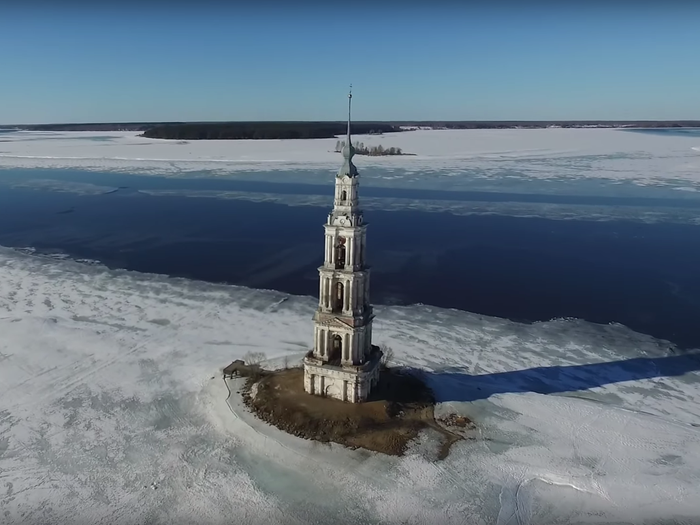
In 1939, the Kalyazin belfry was flooded due to the construction of the Uglich Dam.
You don’t need diving knowledge to explore the ruins of Kalyazin in Russia — the belfry of its cathedral rises high above the water.
Significant development took place in the city in the past but after the revolution of 1917, it began to cease to be an important commercial center and to lose power.
As a result, in 1940 much of the city was submerged due to the construction of the Úglich reservoir and its population was moved to higher grounds.
Sant Romà de Sau, Spain
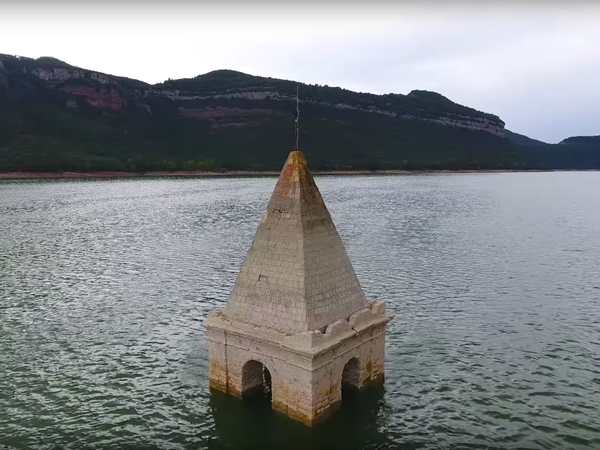
A church in Sant Romà de Sau, a village now submerged beneath the Sau dam. In the Osona region of Catalonia, there’s a village called San Romà de Sau which is entirely submerged by water.
The village originally had houses, a bridge, and a Romanesque church.
The bell tower of the San Romà de Sau church emerges from the water when the reservoir isn’t at full capacity.
During droughts, you can actually visit all the ruins there as they’re completely exposed when there’s no water present.
Mediano, Spain
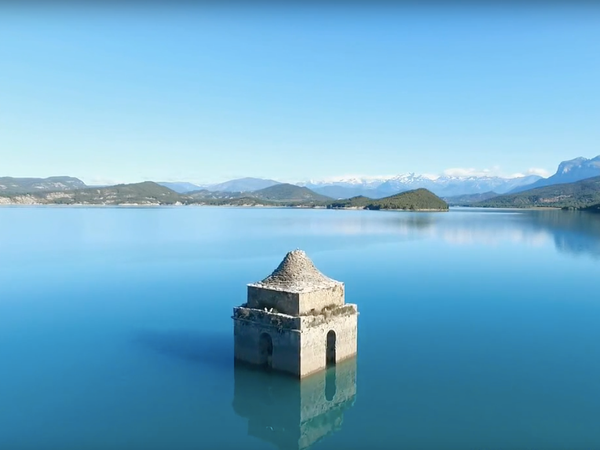
The bell tower in the Mediano reservoir.
In Huesca, Spain, there’s a village that was flooded due to the construction of a reservoir. Today you can still see some of the buildings just above the surface of the water.
Mediano was completely submerged in 1969 as a result of the reservoir built in the area.
Although the news wasn’t published at that time, the inhabitants of the village had to leave their homes when the flood started, as the reservoir was opened without warning.
All the buildings disappeared beneath the water except for the bell tower of the village’s 17th-century church — it’s still visible from above the waters of the Mediano reservoir.
Port Royal, Jamaica
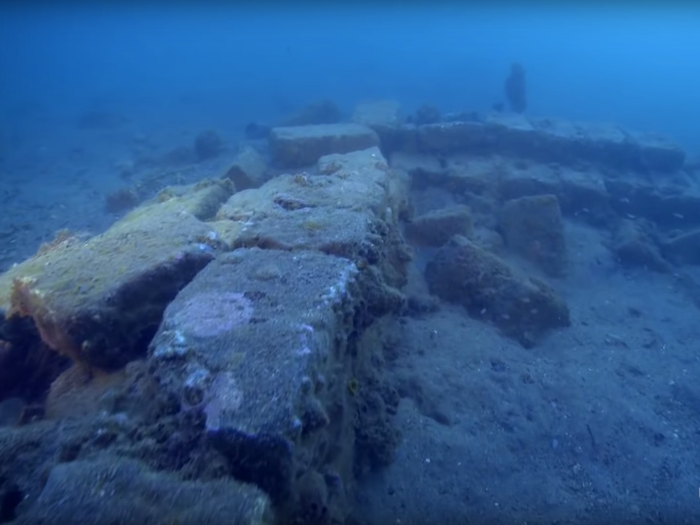
The ruins of a tavern in Port Royal.
As one of Jamaica’s oldest regions, the country considers the port to be part of its heritage — but it’s partially submerged beneath the sea.
During the 17th century, Port Royal served as the seat of the British government in Jamaica.
At one point, Port Royal was a favourite spot among pirates and outlaws and it became known as the “wickedest city on earth” and the “Sodom of the New World”.
This is because the city of Port Royal was submerged by a tsunami in 1692.
Though the city hasn’t been maintained very well and isn’t in the best state it could be, the waters surrounding Port Royal “are an archaeological gold mine, full of pieces of history that tell stories of the early days of the English occupation,” according to Visit Jamaica’s website.
The Lost Villages of Ontario, Canada
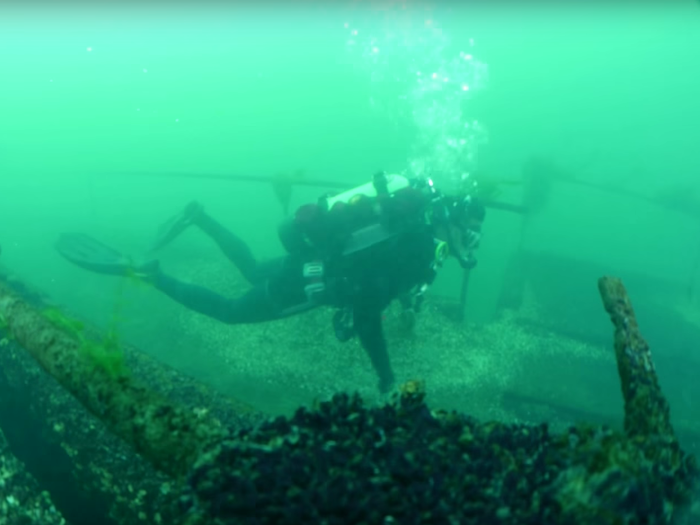
Lock 21 in the St. Lawrence Seaway.The “Lost Villages” encompass a total of 10 Canadian towns.
All of these towns were former municipalities of Cornwall and Osnabruck in Ontario.
Both of these regions were submerged following the construction of a waterway in 1958.
To this day, there are still sidewalks and buildings that are visible from some areas above the surface of the water.
A museum dedicated to submerged villages was built to keep alive the memory alive.
One of the exhibits in the museum features some buildings that were removed from the villages before they were submerged, which have been restored in a similar way to the way they would have stood before the floods.
Pavlopetri, Greece
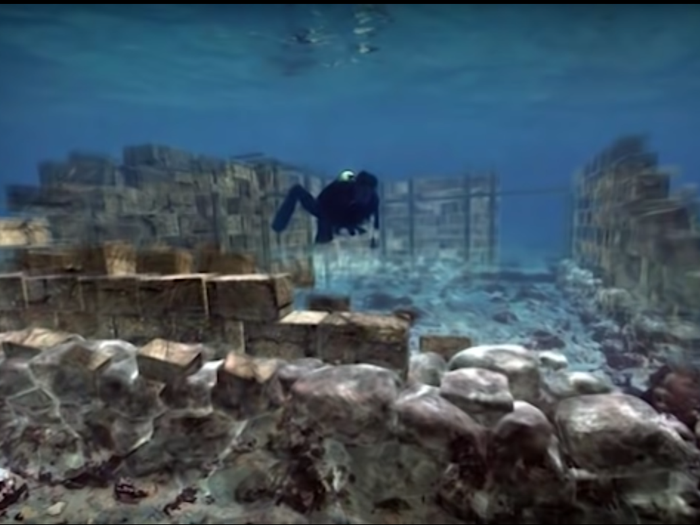
A reconstruction of what Pavlopetri may have looked like.
Pavlopetri is thought to be the oldest underwater city in history.
Located on the southern coast of Lakonia in Greece, the flooding of the city is said to have taken place around 5,000 years ago.
It’s been an archaeological site of great value since it was discovered in 1967.
“It is a unique discovery in the sense that we have found on the seabed an almost complete city, with streets, buildings, gardens, tombs and what looks like a religious complex,” said Jon Henderson of the University of Nottingham after some discoveries in 2009, according to the BBC.
It’s included as a site you can visit along the “water ruins” routes available in the Peloponnese area.





